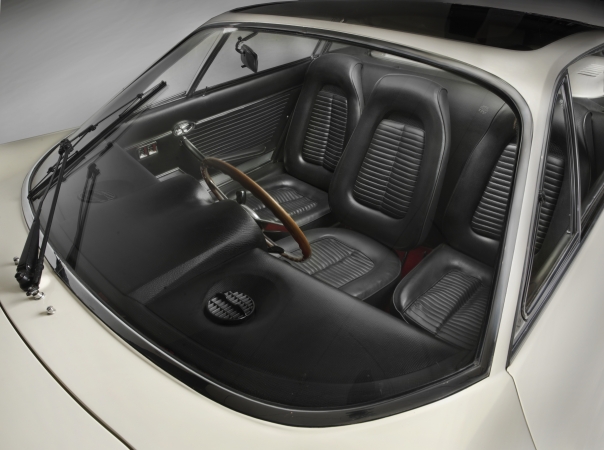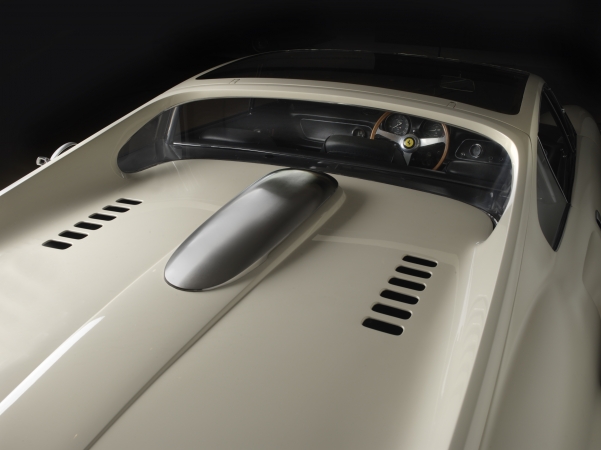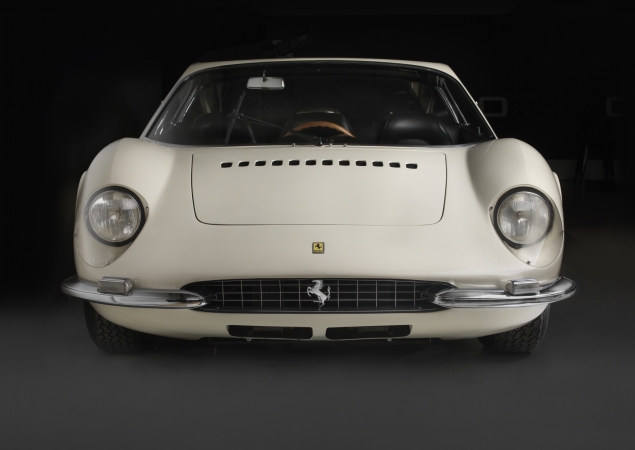Collection of the Luigi Chinetti Trust, Stuart, Florida

1966 Ferrari 365 P Tre Posti. Collection of the Luigi Chinetti Trust. Image © 2016 Peter Harholdt 
1966 Ferrari 365 P Tre Posti. Collection of the Luigi Chinetti Trust. Image © 2016 Peter Harholdt 
1966 Ferrari 365 P Tre Posti. Collection of the Luigi Chinetti Trust. Image © 2016 Peter Harholdt 
1966 Ferrari 365 P Tre Posti. Collection of the Luigi Chinetti Trust. Image © 2016 Peter Harholdt 
1966 Ferrari 365 P Tre Posti. Collection of the Luigi Chinetti Trust. Image © 2016 Peter Harholdt
Sponsored by: Sara and Richard Bovender
Legendary automaker Enzo Ferrari had firm ideas. Although his company successfully raced rear-engine Grand Prix and sports prototype cars, he was convinced that powerful mid-engine cars for the road were simply “too dangerous” for private customers. But coachbuilder Sergio Pininfarina strongly believed that mid-engine production models would be the next important Gran Turismo (GT) car trend, so when he succeeded his father as Ferrari’s chief builder of road-going models, he initiated a bold design study to convince the company of their merits.
The stunning result was the Ferrari 365 P Tre Posti (three seat), Ferrari’s first full-sized twelve-cylinder road car, with seats for two passengers located alongside and slightly behind the center driver’s seat. A centralized steering wheel and similarly located instruments and controls provided a high level of driver visibility and anticipated the modern McLaren F1.
The Tre Posti is replete with iconic Ferrari styling cues, such as an oval-shaped egg-crate grille and Perspex-covered headlamps. The curved glass window behind the passenger compartment became a feature on Ferrari production cars, as did the taillight assemblies with their triple circular lights. From the outset, the Tre Posti was designed to be a functioning, road-going berlinetta. Inside, it was furnished with a three-spoke wood-rimmed steering wheel, electrically operated windows, black long-grain leather upholstery, and bright red carpets.
The engine is a SOHC, twenty-four-valve, 4.4-liter Ferrari V-12, developing 380 bhp, backed by a five-speed manual transaxle. Competition features include an integrated chrome roll bar, an outside fuel filter, five-spoke cast alloy wheels, a competition pedal box, and a gated shifter. This car, S/N (serial number) 8971, was a hit at the 1966 Paris Auto Salon, and it was subsequently displayed at the Los Angeles Auto Show. It was then purchased by Luigi Chinetti Sr., a three-time winner of the 24 Hours of Le Mans and the founder of Ferrari in North America.
—Adapted from the exhibition catalogue essay by Ken Gross
